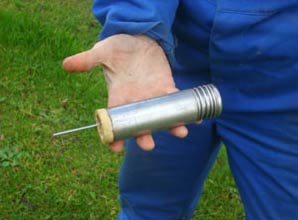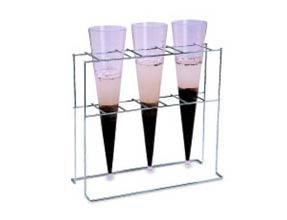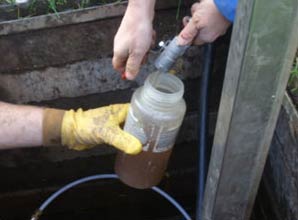Trunk Main Sampling Methodology
The following procedure is followed on site.
The trunk main sampler is attached to a 2" tapping point or air valve (AV) installation with AV removed, isolated and the valve opened. The sample head is moved past the valve and down into the main using a 110 volt drill via a gearbox mechanism. Once through the valve, the head is 'drilled' down to near the invert, when a spring mechanism trigger hits the pipe and the sampler head springs down onto the pipe. The head is then fully drilled down to achieve a seal on the pipe. A main tap is then opened. If a seal is achieved, opening the main tap does not produce a sample - a second tap is opened which allows a controlled flow of water to re-suspend the deposit, which is collected in a 1 litre sample bottle and labelled. The sampler head is then retracted fully from the main, the valve is shut and the sampler removed.
The camera housing is then attached to the tapping point. The camera and light source are fed into the housing and the video recorder started. The valve can be seen to be opening and by altering the light intensity, the camera's approach to the pipe invert can be seen as it is 'drilled' down in the same way as the sampler. Similarly, as the camera housing is retracted, its progress can clearly be seen. Once the valve is shut, the camera and housing may be removed and the recorder switched off.
The sediment samples are taken to the laboratory where they are shaken thoroughly and colour coded. The samples then undergo analysis for sediment volume in Imhoff Cones. The results presented in report format include colour grade, deposition level, camera inspection commentary, photographic images and video footage. In addition water quality samples can be analysed for metals content to allow clients to understand the metal levels within the sediment.


